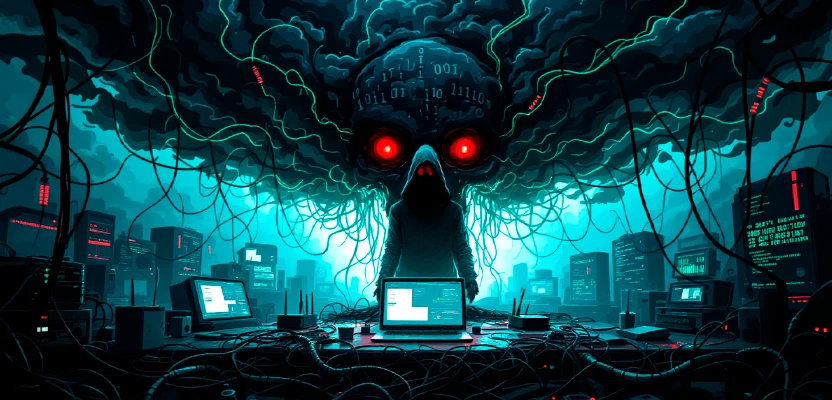
Seven years have passed since the Ngioweb botnet first appeared, yet it remains a significant cybersecurity threat. Despite continuous efforts to mitigate its impact, Ngioweb's underlying infrastructure has shown exceptional resilience, adapting and thriving amid global attempts to counteract its operations. Here’s a comprehensive look at how this botnet has evolved and why it continues to challenge digital security.
The Unwavering Resilience of Ngioweb
Originating in 2017, Ngioweb has cemented its status as one of the most enduring botnets in the cyber landscape. It specializes in converting compromised routers and IoT devices into “resident proxies.” These infected systems are sold through the Nsocks marketplace, a shadowy platform where access to proxies starts at a mere $0.20 per day. The marketplace’s low-cost, high-availability model makes it an attractive tool for cybercriminals worldwide.
How Nsocks Powers Cybercrime
Established in 2022, Nsocks offers a wide selection of roughly 30,000 infected IP addresses. Customers can purchase access for as little as $1.50 for 24 hours. The marketplace provides options to filter proxies by location, device type, and connection speed, and payments are exclusively in cryptocurrency, ensuring total anonymity for both sellers and buyers. Notably, over 75% of these infected devices belong to residential users, making them a prime target for Ngioweb’s operators.
Primary Targets: Vulnerable Devices at Risk
The malware primarily targets common household devices. Examples include:
- Zyxel Routers: Frequent victims of attacks aimed at harvesting UK-based proxies.
- Linear eMerge Systems: Access control software heavily exploited through vulnerabilities like CVE-2019-7256.
- Neato Robotic Vacuums: Despite the company ceasing operations in 2023, thousands of connected devices remain susceptible to infection.
Attackers employ highly specialized scanners tailored to specific vulnerabilities, ensuring that they can continue expanding their botnet efficiently while minimizing exposure of their full suite of exploits.
A Historical Perspective: Ngioweb’s Tenacity
The earliest detailed examination of Ngioweb was published in a Check Point report in 2018. It highlighted the botnet’s link to the Ramnit banking malware family. Subsequent studies by cybersecurity groups like Netlab documented its command-and-control (C&C) mechanisms and domain generation algorithms (DGA). While the botnet’s core code has undergone minimal modifications, Ngioweb’s strategic adaptability has ensured its survival.
Domain Generation Algorithms: A Masterstroke in Obfuscation
Ngioweb employs sophisticated domain generation algorithms to maintain communication with its C&C servers. These algorithms make it difficult for security experts to disrupt its operations through conventional sinkholing tactics. Recent analyses by LevelBlue Labs reveal that the malware has even incorporated encrypted TXT records to authenticate its C&C servers, adding another layer of complexity to its defenses.
New Developments in 2024: Analyzing Infections
The past year has witnessed a resurgence in Ngioweb activity. As cyber adversaries uncover new vulnerabilities, Ngioweb has adapted to exploit these weaknesses. For instance, LevelBlue Labs identified a recent campaign targeting Zyxel routers and Linear eMerge systems, deploying minor tweaks to Ngioweb’s payload to stay ahead of detection mechanisms.
The Dark Economy of Residential Proxies
Nsocks has evolved into a robust black-market operation, facilitating the global sale of residential proxy access. The botnet has seen substantial growth, from 14,000 IPs in 2022 to nearly 30,000 in 2024. Popular countries for these proxies include:
- United States: 13,056 proxies
- United Kingdom: 4,236 proxies
- Canada: 2,286 proxies
Proxy Categories and Market Trends
Infected systems are categorized based on their network type, including ISPs, government entities, and educational institutions. Nevertheless, residential ISP connections remain the most desirable, owing to their higher anonymity and the ease with which they can be infected.
The Infection Mechanism: How Ngioweb Spreads
Ngioweb’s infection process has become more refined over time. The botnet now leverages a growing arsenal of zero-day exploits. Key observations include:
- Linear eMerge Exploits: Two dedicated IP addresses run scanners that search for vulnerabilities in access control systems, specifically exploiting CVE-2019-7256.
- Zyxel Routers: Attackers target models like the vmg8623-t50b, capitalizing on severe vulnerabilities that have historically plagued these routers.
- Neato Vacuums: Although Neato ended operations, 128,000 devices remain connected and vulnerable, particularly in the U.S. and India.
Attackers meticulously scan for devices, using tailored payloads based on the device type. The scanners use advanced methods to verify and download malware payloads, often locking out security researchers by closing connections to unauthorized systems.
The Larger Cybersecurity Implications
Ngioweb exemplifies the persistent nature of modern cyber threats. Its ability to morph and maintain operational relevance over years poses severe challenges for cybersecurity teams. The rise of residential proxies has complicated efforts to trace malicious activities, as these proxies grant attackers unprecedented anonymity.
Detection and Defense Strategies
Cybersecurity experts have developed several approaches to detect and prevent Ngioweb infections:
- Custom IDS Signatures: Advanced DNS and HTTP signatures help flag malicious communications.
- Surveillance and Analysis: Monitoring suspicious exploitation attempts, especially those targeting known vulnerabilities like CVE-2019-7256.
Organizations are advised to adopt proactive defense measures, regularly update software, and employ comprehensive monitoring systems to guard against these threats.
Conclusion: The Battle Is Far From Over
The Ngioweb botnet, with its resilient architecture and evolving strategies, stands as a testament to the ongoing cybersecurity arms race. As the threat landscape continues to shift, staying informed and vigilant is paramount. The fight against Ngioweb, like many other cyber adversaries, will require innovation, collaboration, and constant vigilance from the global cybersecurity community.




Comments 0